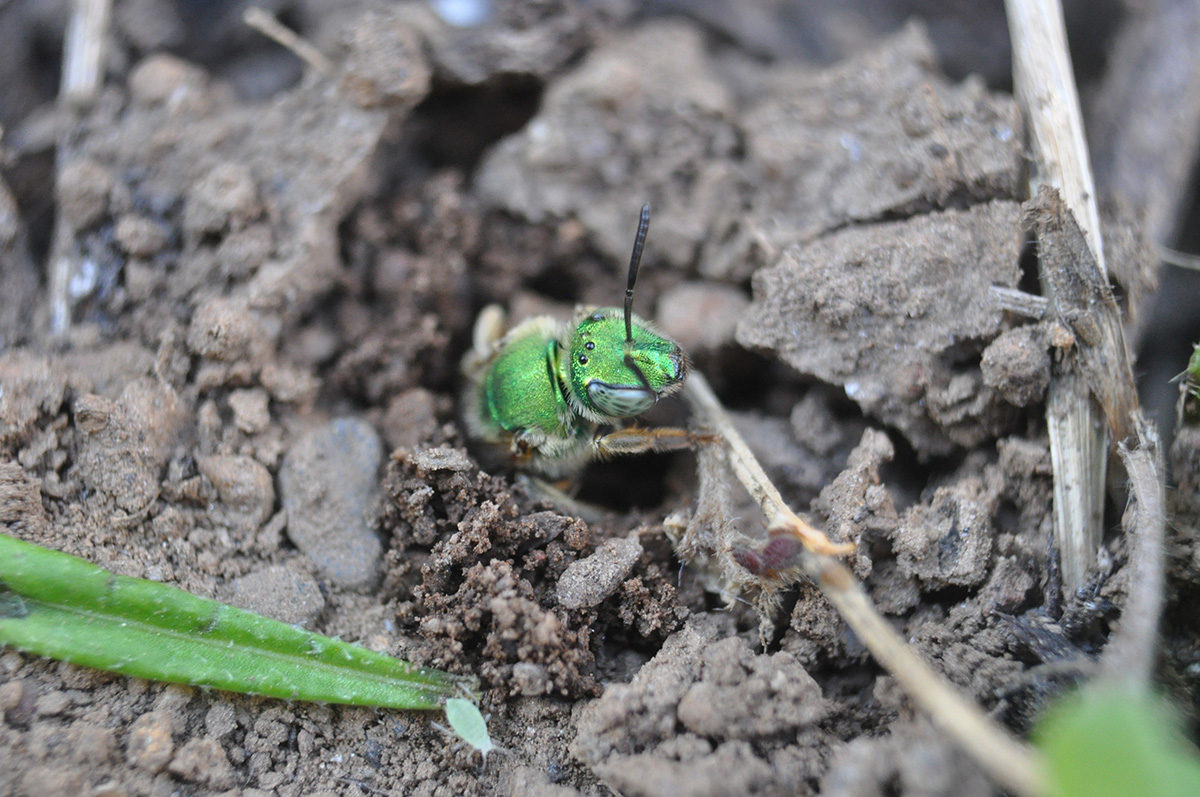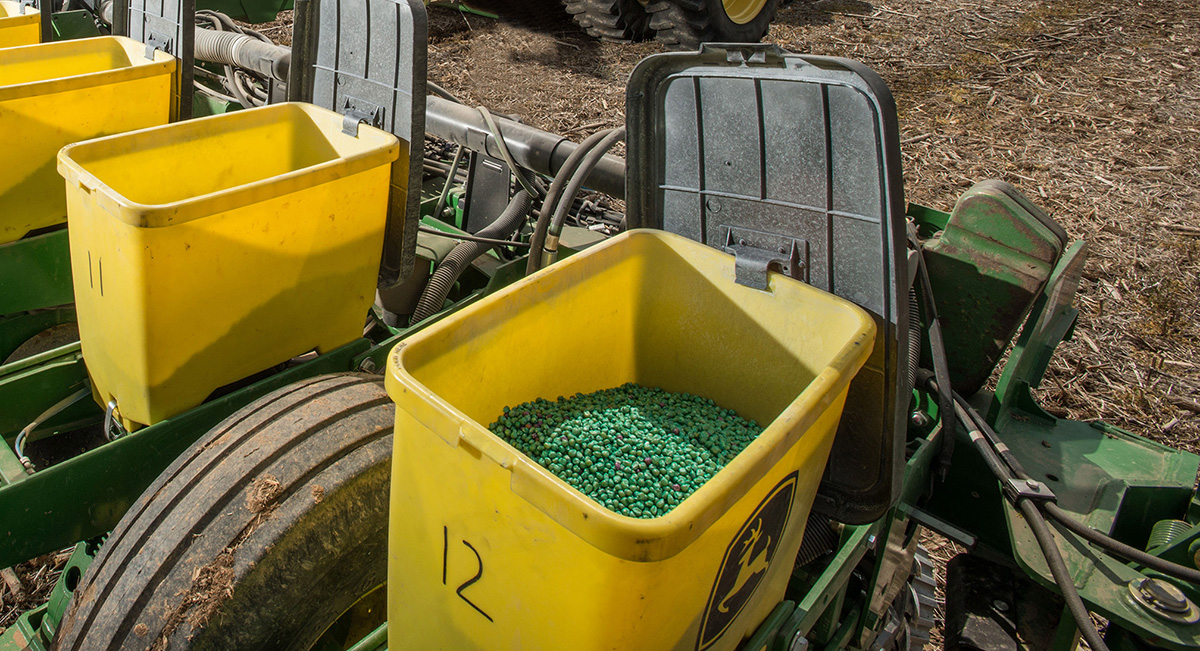Almost every day, you’ll find Xerces’ staff out in the field helping people understand, appreciate and protect the little things that run the world: invertebrates. Whether we’re tromping through agricultural fields, selecting native plants for restoration or chatting with home gardeners, we’re giving people the tools they need to heal their corners of the planet.
Yet, there are times when the risks we face are so widespread and entrenched that policy change needs to be part of the solution. That is definitely the case with pesticide-coated seeds.

Dozens of crops including squash, lettuce, tomatoes, broccoli, cotton, wheat, corn, soy, and sunflowers can be and are coated with pesticides before being sold. The pesticides are expected to kill pests that would feed on the seed and/or growing plant. Neonicotinoid insecticides are probably the best known pesticide used to coat seeds, but other pesticides are also applied, including other systemic insecticides and fungicides.
The US Environmental Protection Agency (EPA) designated, and recently reaffirmed, coated seed as “treated articles,” which basically exempts them from pesticide regulation. The impacts of this unregulated use of pesticides range from concerning to outright devastating. We think the EPA needs to step up and provide oversight to, what else, protect the environment.

Top Seven Reasons to Regulate Pesticide-Coated Seed
7. There is shockingly little of knowledge about where and how these seeds are planted.
When it comes to pesticide-coated seed, we’re basically sowing uncertainty. Scientists and the broader public have minimal information on the extent to which these seeds are being planted. Many farmers don’t even know what is on the seeds they are planting. Were coated seeds considered pesticides, there would be a structure in place to better inform farmers about the seed they buy and ensure regulators, scientists and others could evaluate the impact of this pesticide use.
6. Treated seeds account for millions of pounds of pesticide use.
Conservative estimates (that only look at a few major crops in the US) found that pesticide-coated seeds are planted on approximately 150 million acres in the United States. Exempting other treated articles such as mosquito nets and railroad ties from pesticide regulation seem slightly more reasonable, since they are used on a much smaller scale relative to pesticide-coated seed.
5. They often don’t even work.
Researchers from across the Midwest joined together in explaining how neonicotinoid coated seed added little or no value in managing pests in soybean production. One study even found that coated seed harmed natural enemies, allowing pests to thrive.
4. Coated seeds are bad for bees and other invertebrates.
There are numerous studies showing how planting insecticide-coated seeds can harm efforts to support bees in and around farmlands. Toxic dust can be released during planting, which can settle on bees or the flowers they feed on. This is especially concerning for bumble bee queens that could be poisoned while foraging to establish a new colony. Also, the soil in and around fields planted with coated seed can become contaminated, which can in turn harm native ground-nesting bees that are important crop pollinators.
3. Neonicotinoids poison rivers and streams.
Neonicotinoids are water soluble, meaning they bind to and move with water. So, when neonicotinoid-coated seeds are planted, some of the pesticides can wash off into rivers and streams. Two main crops that commonly use neonicotinoid coated seed are corn and soy. Since corn and soy fields blanket much of the Midwest, researchers from the US Geological Survey tested rivers and streams for neonicotinoids. Sure enough, they were present in Midwestern waterways throughout the year, often at levels that pose risk to beneficial aquatic invertebrates.
2. Leftover seeds create mountains of toxic waste.
Since treated seeds aren’t considered pesticides by the EPA, their disposal isn’t regulated. This led to a horrific contamination incident in Nebraska when leftover treated corn was used in ethanol production. For years, residents near the ethanol plant complained of terrible odors, strange illnesses and harm to wildlife. Finally, once the extent of the contamination was brought to light, Nebraska legislators banned the use of treated seed in ethanol production. Since then state regulators have struggled to clean up the 115 million gallons of contaminated water and 99,000 tons of solid waste left behind after the plant closed. The challenges of responding to this one incident doesn’t begin to address what will be done with the tons of seed that continue to go unused each year. Where will it all go?
1. It’s the right thing to do.
The number one reason to regulate pesticide-coated seed is because it is the right thing to do.




